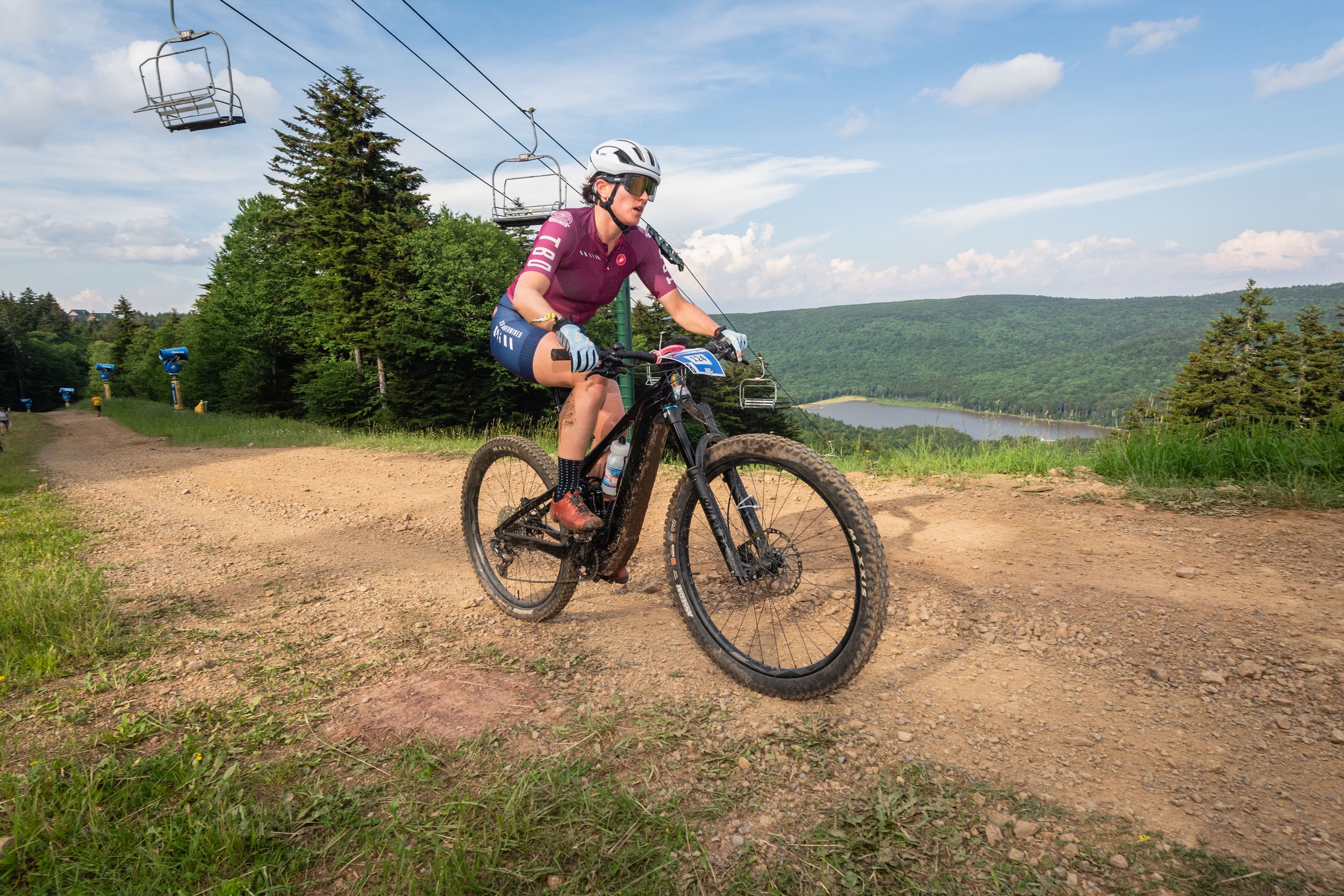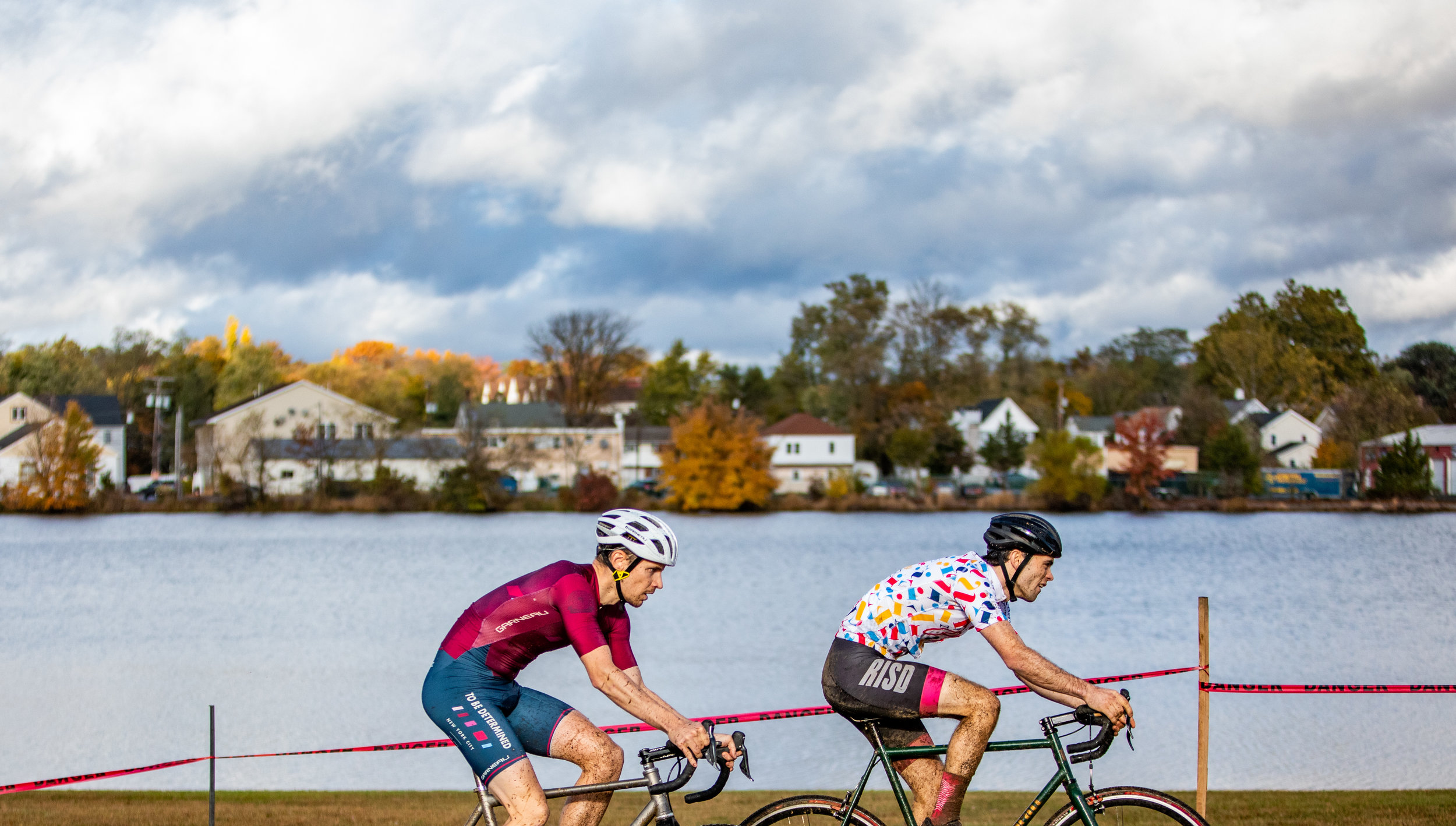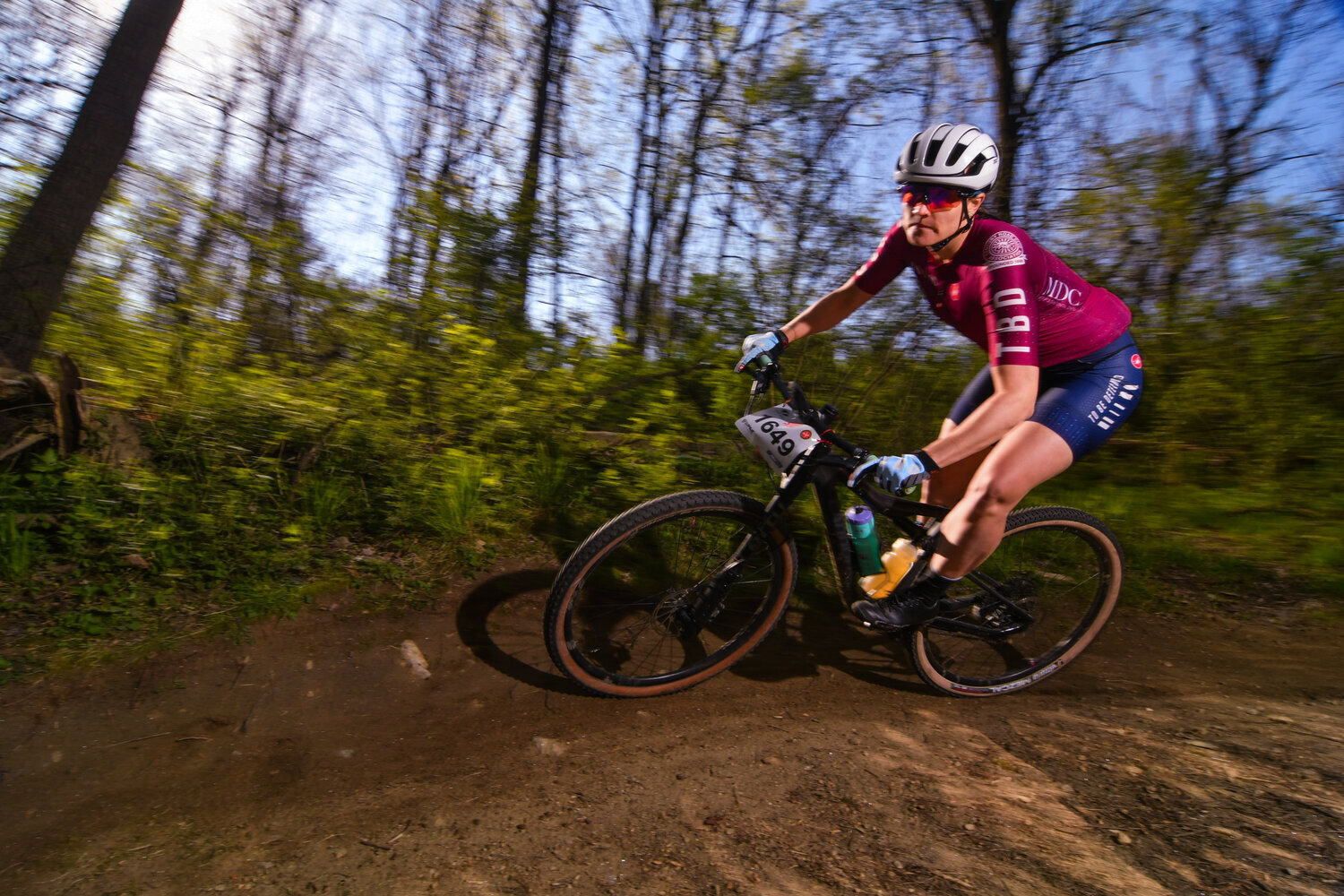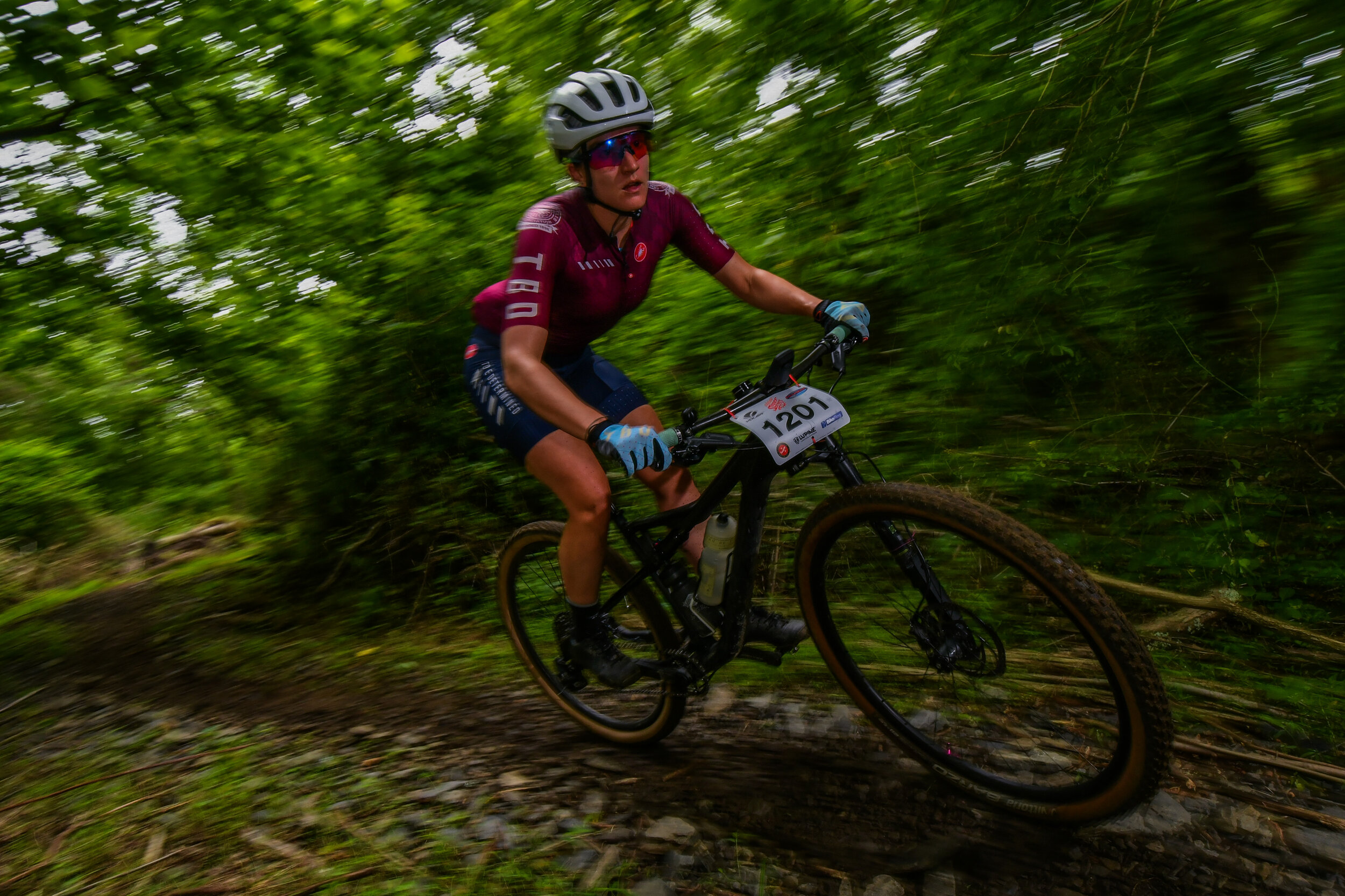eMTB Racing to the Top of the World

How I Got Here
2022 makes it 14 years since I got dropped on the start line of my first collegiate crit. I love bikes, and more than that, I love the challenge and adrenaline of racing bikes in particular. Since that first race, I’ve done all the types of road racing (easiest to do but not my favorite), a fair amount of track (incredible but geographically challenging), a lot of cyclocross (YES), a few fixed crits (no), a smattering of gravel (meh), and plenty of cross-country mountain bike racing (also yes). Oh, and one time I raced a helicopter on a Citibike.
The wildest idea I’ve had yet, though, is “I should buy an eMTB, and I should race it.”
I was surprised when I presented this to the TBD team coach last year after watching Chris Blevins take a medal in the eMTB race at Worlds and he did not tell me I was out of my mind. Honestly, I expected to be laughed off the weekly team call, but he took me seriously and started giving me advice on how to make it happen.
I spent months trying to secure a bike (this economy!). Finally, over the winter, King Kog in Brooklyn was able to find me one that would ship almost immediately (the Giant Trance X Advanced E+). Then I spent more months trying to figure out how to ride the thing—it’s not harder than any other mtb, it was just a sad winter full of wet, unrideable trails. Finally, the racing part came in.
Turns out that eMTBs are not actually super popular with the bike racing crowd. They are, however, really popular with the dirt bike racing crowd. Most of the eMTB races to be had on the east coast don’t happen at bike races, but at dirt bike races. The big series is the Grand National Cross Country (GNCC), but the JDay Offroad series in Massachusetts also added an eMTB race this year at many of its events.
GNCC races attract the most people, though, and doing a few was my goal for the season.
This past race was in Snowshoe, West Virginia, a ski mountain on the eastern edge of West Virginia, probably best known among TBD’s audience for its excellent downhill bike park and annual UCI Mountain Bike World Cup race. Snowshoe also, it turns out, hosts a GNCC race. As a fangirl who has been dying to go to a MTB world cup, Snowshoe was the GNCC race I was most looking forward to.
Photo: Mack Faint
It didn’t disappoint. Snowshoe itself is breathtaking: the resort is at the top of the mountain, rather than the bottom, so depending on where you are standing you can look out on several different surrounding valleys and opposing mountains. New TBDer Diane and I drove down for a full week, and in addition to the race, took on the bike park and the many beautiful backcountry cross country trails.
But, of course, what I’m here to report on is the race.
Snowshoe GNCC WXC Women’s Race Report
The course made use of a fair amount that I recognized from obsessively watching Snowshoe MTB World Cup previews, plus added sections that went both down and up steep parts of the downhill park, and a section of newly cut trail that was rooty, slick, and nearly impossible to ride. Everything was strung together with extremely steep ski-mountain-special dirt climbs. A lot of it scared me at first! Nothing was unrideable, exactly, but it was all hard. It took concentration and a whole body effort to get the most out of each section. Everything was just a little bit extra to what I’d previously raced, in either eMTB or XC. Even a part that should have been easy—a downhill grass transition between the end of one trail and the beginning of another—was steep, off camber, and had absolutely no traction. I ended up crashing pretty badly on Friday during my pre-ride on the stupid grass (see above: cyclocross YES), and my entire 53lb (that’s light, I swear) bike plus most of my own weight came down on my knee. For a brief moment I thought I might have really hurt myself, but I got lucky and hit the muscle inside my knee, rather than the stuff that doesn’t repair itself so easily.
In the end, after about 7 preride laps, an extended anxiety attack, and a reminder to myself that my ebike has almost twice the suspension of my Scalpel plus 4x the power, the challenge of the course made it fun! The course was a constant switch between steep but not overly technical climbing and descents that required real thought about where I was putting my body and my tires to get the best out of gravity, so it was like constantly flipping a switch between my legs and my head.
There was one section of newly cut trail that I just couldn’t figure out. It was short, wet, rooty, and had a row of three trees near the entrance to the section that were too close together for most people and their bars to get through while moving. There was more space on the right line, but a huge root coming out of the ground off camber and diagonally was difficult to maneuver over (I slipped out every time I tried). The left line was too narrow for most people to get through without taking a foot off the pedals. This is where the ebike is a disadvantage: in a race situation, my bike is giving me 4x my power when I step on the pedals, so in a super tight space it’s actually really hard to finesse your way through a lot of trees without simply careening into one without meaning to. There were a lot of wet roots underneath loose dirt, too, so once a foot came off, I kept finding that my back tire would just spin out before I could get any traction to keep going again.
In the end, I chose to run this section because I couldn’t figure it out in preride (cyclocross - YES). Turns out that would have been the fastest way of getting through the section if it wasn’t for other people, who stalled on their bikes ahead of me and I had no way of getting around, and if the drivetrain of an eMTB worked in the same way my other bikes do. Unfortunately, the crank is connected to the motor and pedaling backwards does not cause the chain to move backwards. That means 1) the crank spins backwards way faster and more easily than if it had more friction from the drivetrain, and 2) because of the way the motor engages, the first pedal stroke requires WAY more torque on an ebike than on a regular bike. So every lap I lost 10-15 seconds trying to get my foot connected to my pedal and get the bike moving again (and weeks later I still have a left shin bruise). Did I spend those 10-15 seconds every lap silently screaming, “But I’m good at cyclocross!!!”? Yes, I did. It didn’t help.
In the end, I was several minutes off the leaders of the pro race, but also minutes ahead of the winner of the amateur race. It’s not quite imposter syndrome but I have some work to do.
Snowshoe GNCC Spectator Report
One of the cooler parts of ebike racing being a part of the GNCC series is that there are whole new types of racing to watch. Like a big CX weekend, GNCC has low key preriding Friday, then two full days of racing on the weekend. It’s ATVs and ebikes on Saturday and dirt bikes on Sunday. With my race done and out of the way, Diane and I had a blast on Sunday watching the pro dirt bike racers fight their way through a course that had completely changed after a huge thunderstorm blew through on Sunday morning. We spent most of our time at a section of the course known as “Howard’s Hole,” and you should know that “hole” is a euphemism for “it’s a mud pit even on dry days.” (How do you get there? We asked. “Just follow all the people and their cooler backpacks full of beer.”)
Howard’s Hole is not quite the party on Sunday as it is on Saturday during the ATV race, as dirt bikes are slightly easier for riders to maneuver through the rocky, uneven mud than ATVs are, but it still was pretty epic. At a GNCC race, spectator participation is allowed and even encouraged, so people get drunk and not only point out lines (which may or may not actually be correct) but can also physically help if a rider needs it. Absolutely wild.
Photo: Mack Faint
Photo: Mack Faint
Some Last Thoughts On Ebike Racing In General
I freaking love my eMTB! I’m an evangelist. It’s not quite the same as a legs-powered bike, but neither would I call it easy to ride one. When I start talking to people about ebikes I hear a lot that they’re “cheating.” [eye roll emoji] Class A ebikes, the ones you use to race and a large portion of the ones that bike companies you’ve heard of sell, don’t move forward unless you’re pedaling. The motor also shuts off automatically at 20mph, so it becomes really hard to go faster than that.
With my eMTB compared to my XC bike, I find that on a typical ride I go faster, longer, and further. It’s easier to do a ride that actually stays at endurance pace, for those that need that for training, medical, or age-related reasons. However, it’s also possible to go hard! My average heart rate at the Snowshoe race was 174, and my max was 194 for my 1:02 race. Compare: at HPCX in 2021, one of the hilliest CX races I did, my average HR was 176 and my max was 187 for just over 56 minutes.
I’ve also found that what, if any, the eMTB reduces in cardiovascular effort it makes up for in combined physical and mental strain. I’ve done a lot of rides where the ebike kept me from ever having to put my HR into the red, but at the end just 90 minutes or so I’m completely exhausted. It’s both physical, from pushing 53lbs of bike around Westchester rocks that I’m excited to be able to clear with my newfound power and suspension, and mental. Going faster means obstacles coming at you much faster, and the energy it takes to process that leaves me spent. As a result, my overall mountain biking skills have gotten better. I know a little better what obstacles I can get over with just one more big torque pedal stroke, and I’m more comfortable going faster on descents.
I also gotta say, there’s no better feeling than getting on my 25lb XC bike the first time after I’ve been riding my 53lb ebike for a while. :)
Images below by Shane Ferro.



















